An oak tree stands above us, its leaves rustling in the breeze. It’s the leaves that give it away – in September in New Zealand a deciduous tree wouldn’t be in full leaf, and the rustle has too much of a rattle about it; this tree is a fake. It’s not the only fake thing around here, although you’d be hard pushed to tell that the bread cooling on a windowsill isn’t real, that the fish glittering in a basket beside the lake have never drawn watery breath, that the honey for sale has never been near a bee. Nor would you guess that the person who made that pot of tea on a small table by their door won’t be back in a second to pour it into the cup alongside. We really could be wandering through a small English village.
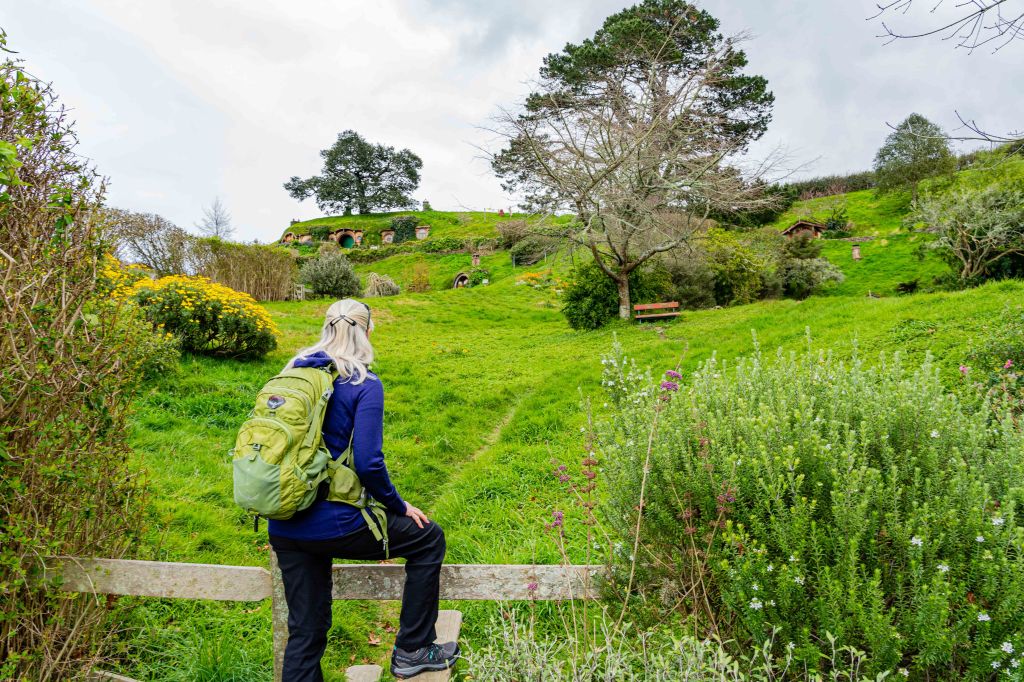
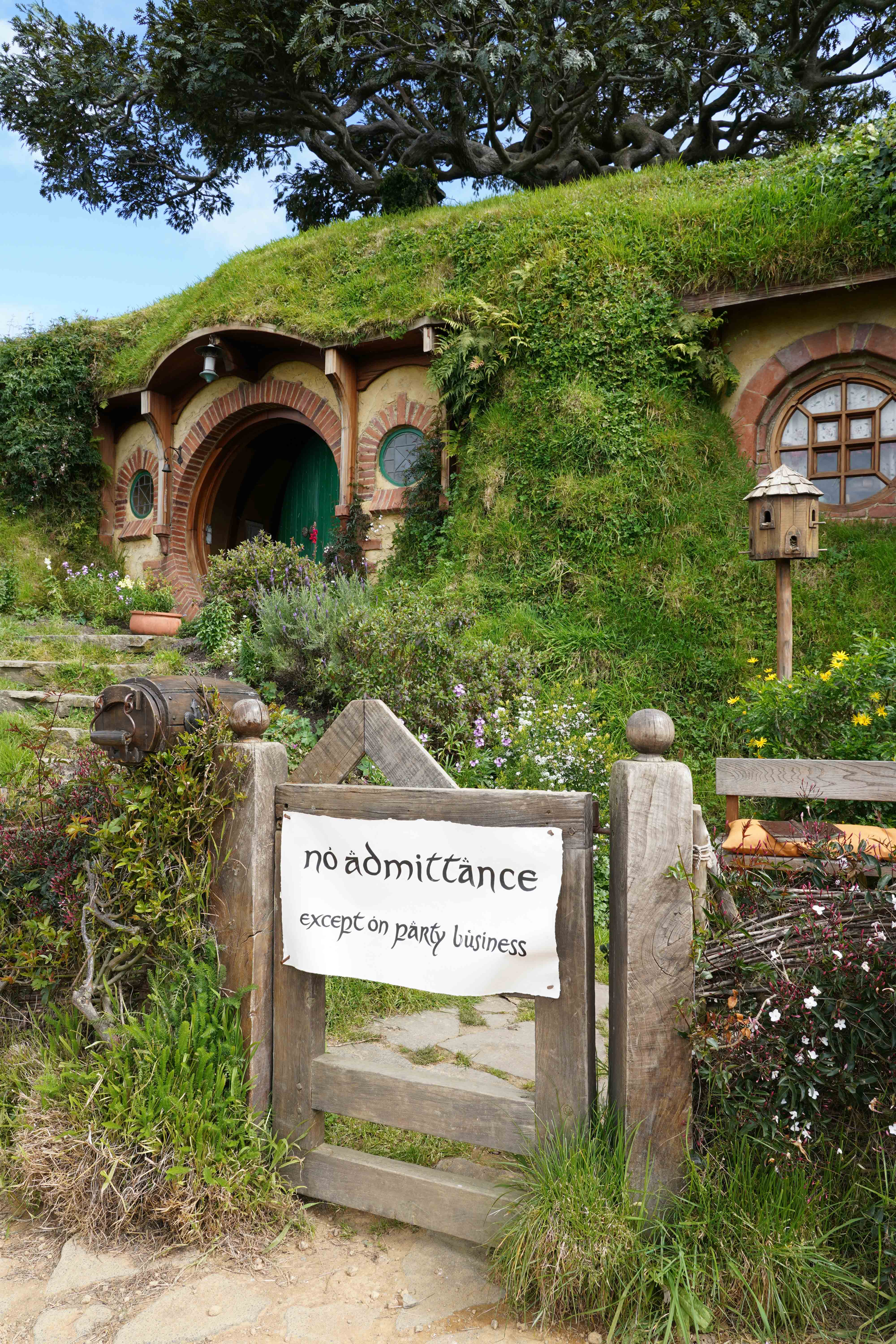
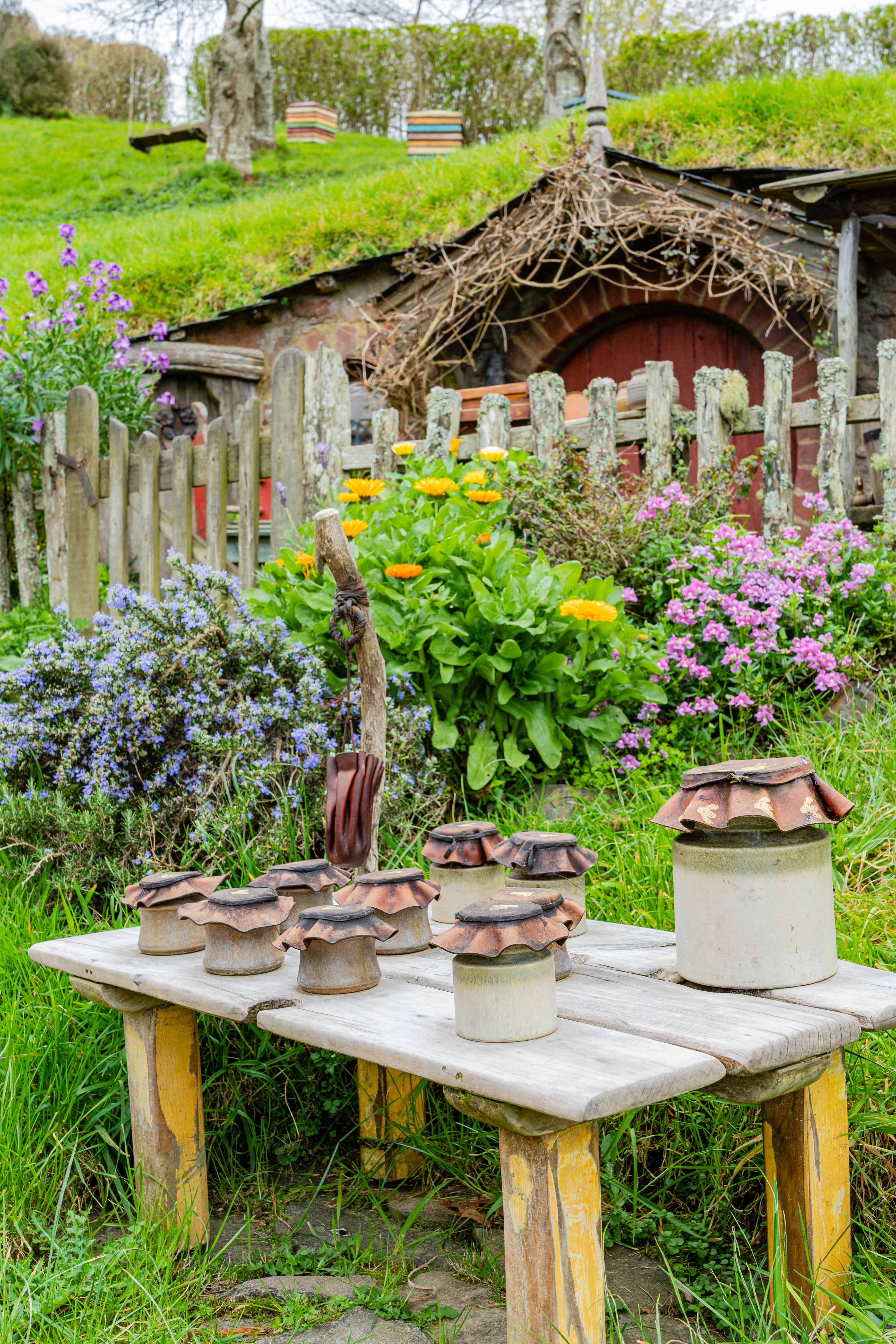
This is Hobbiton. Created over two decades ago for a trilogy of films, it was dismantled and carted away after those films were in the can. Then the man who made the movies decided to film the prequel and knocked on the farmer’s door a second time: Can we re-build Hobbiton on your farm please? The farmer, a canny man who was already showing movie enthusiasts around what was basically a field with a few holes dug into banks said, Yes, if you leave it here after you’ve finished. The result is one of the most visited tourist sites in New Zealand.
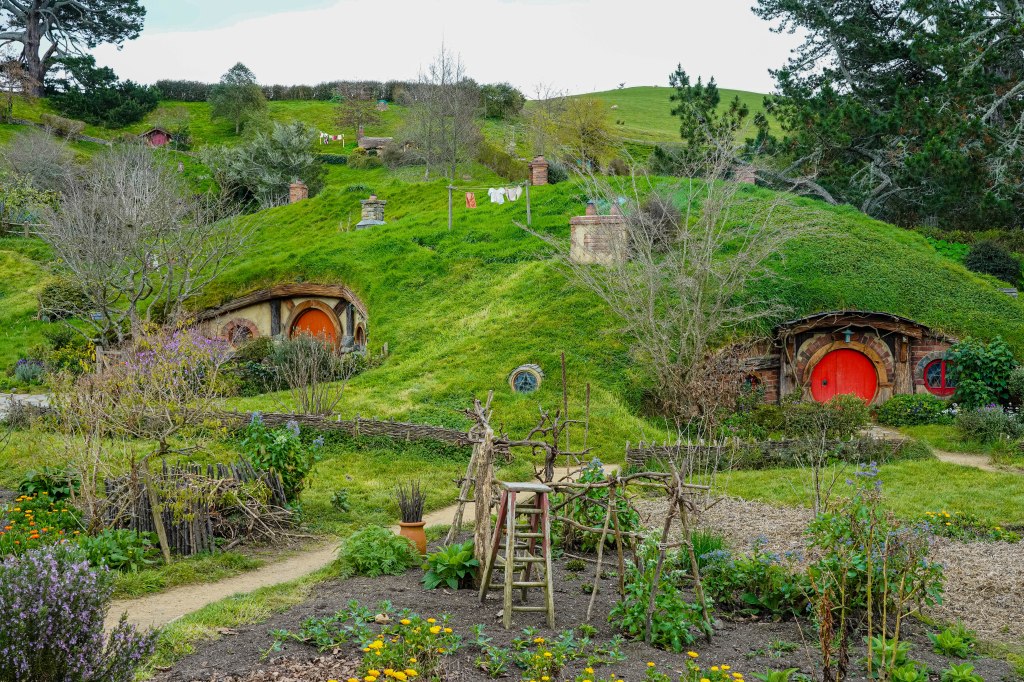
Much as Samwise Gamgee had long wanted to see where the elves live, I’d long wanted to see this place. But, as anyone who has read my earlier posts would know, I’m a woman who likes to soak in the atmosphere of a place, and I struggle to do that when I’m shuffling along in a group of phone-toting tourists. (Yes, I know how contradictory that is – they are only here to see the same as me.) In the midst of a global pandemic, overseas tourists aren’t allowed into NZ and locals are exhorted to ‘explore our own backyard’. (Our apartment doesn’t have a backyard and, whilst the house in Ohakune does, there’s not much to see in it and, frankly, the lawn needs mowing and the bushes trimming, neither of which is my idea of a holiday.) We aren’t the only ones doing so, but tours that normally run every fifteen minutes are currently running every ninety minutes, a fact emphasised by the sobering sight of a row of green logo’d buses sitting idle along one side of the car park.
This is destination tourism, down narrow country roads that twist and turn, rise and fall, towards a working farm. Bus drivers around here must be made of strong stuff – some parts are tricky enough in a small SUV. Our guide is a local, as are all the staff here, an employment oasis in the middle of rural NZ where jobs are scarce and people move to cities to find work. She is knowledgeable and entertaining and clearly loves her job, telling stories about the set and the people who visit – some arrive in costume, some even re-create scenes from the movie; there have been proposals of marriage (we asked the obvious and, yes, one was declined!) At one event, the culmination of an international competition, Black Riders chased the coaches as they arrived and the actors who played the real-sized hobbits in the films were revealed from behind a curtain – a few people fainted with excitement.
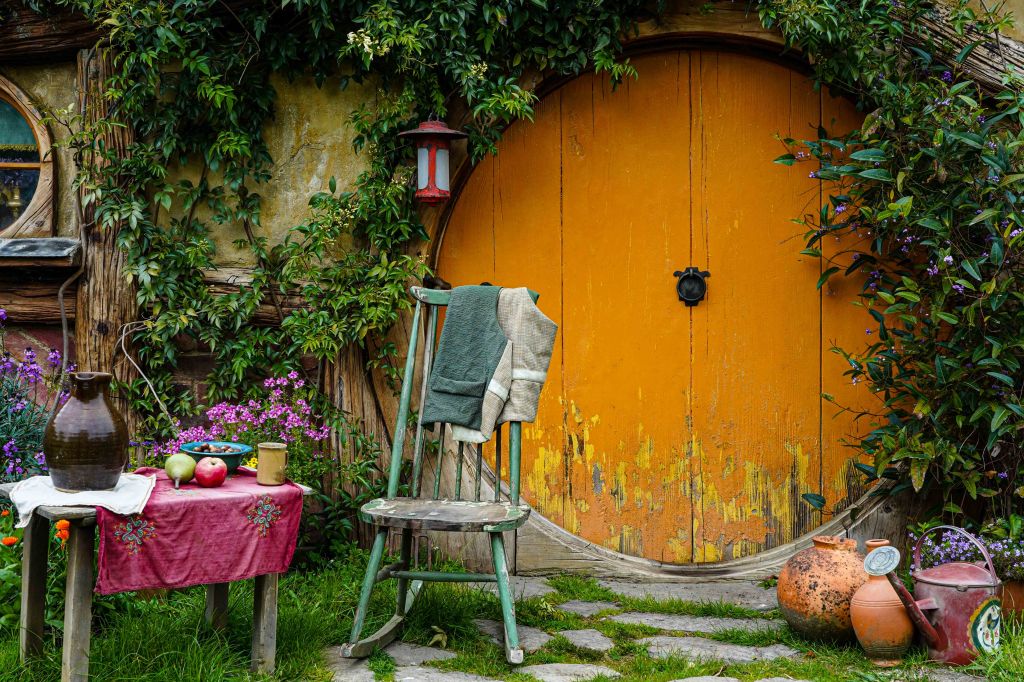
I’m not about to do that but I’m very impressed. We check-in fifteen minutes before our tour is due to start, then board one of the green buses. It’s a ten-minute journey along farm roads where curious sheep check us out as we pass slowly. Then we drop down into a small valley and a fenced bus park where we disembark. I’m not the only one looking around wondering where the village is. The answer is through a gate and along a narrow path between hedges that open to a view of a lake surrounded by round doors in banks that rise towards the towering oak on the near horizon.
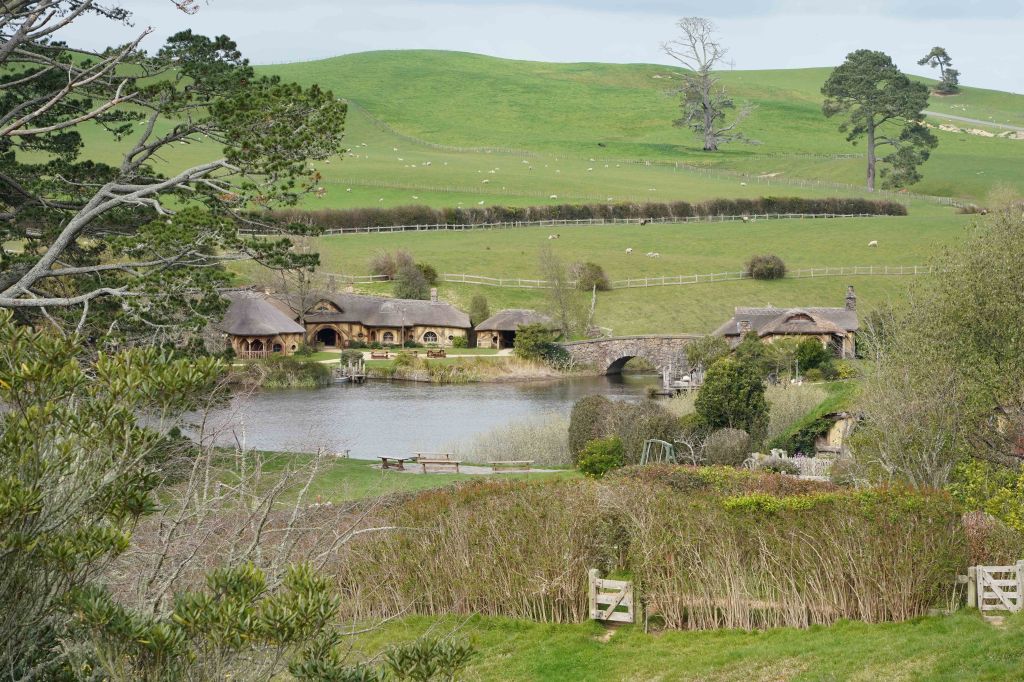
It’s well organised, the route designed so that even in busy times the groups don’t pass each other and view lines are clear for photographs. We follow narrow paths, a circuitous walk that ensures we see everything, the pace slow and unhurried, perfect considering we are in hobbit territory. We pause at the home of Bilbo and Frodo, the oak towering over us, then onto Samwise’s place where the final scene of the trilogy was filmed.
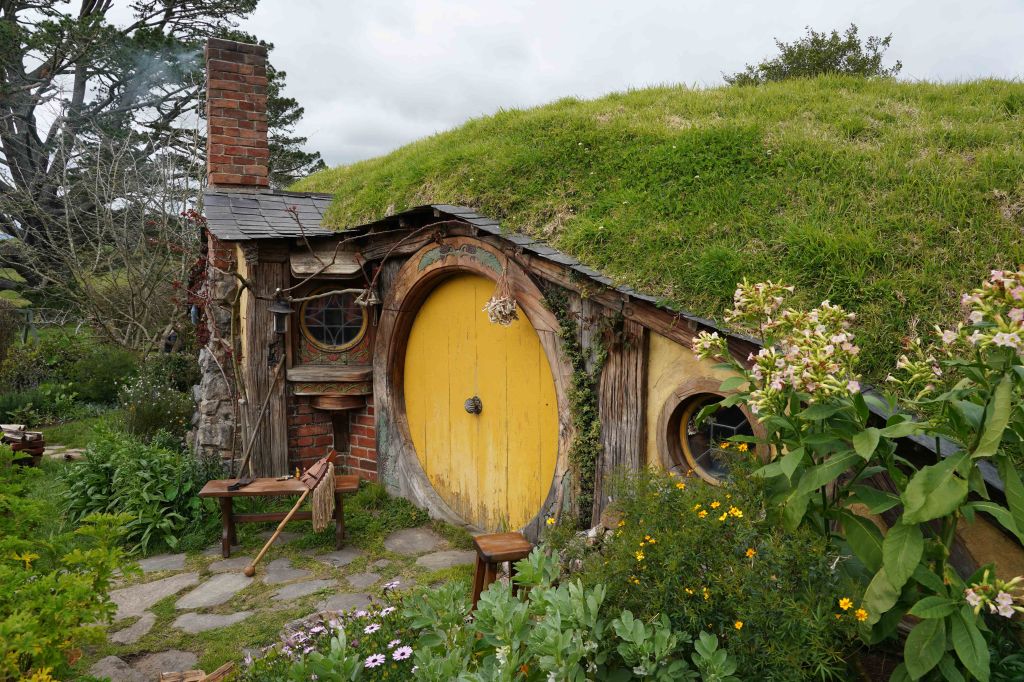
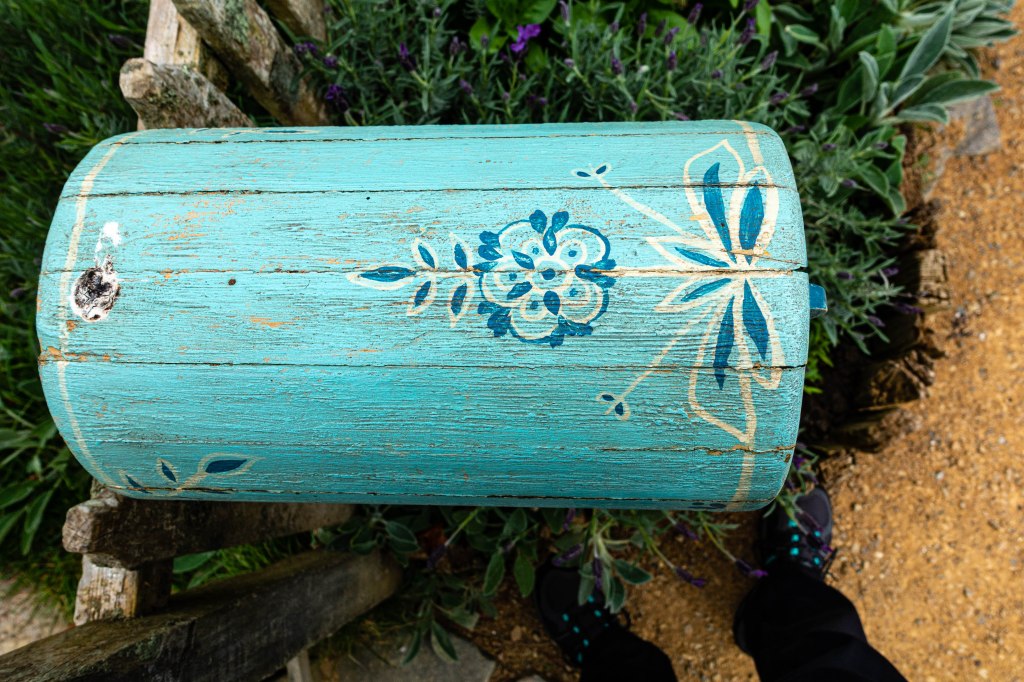
The attention to detail is amazing: the scales on the fish look real and apples fallen from trees have bruises; smoke curls from chimneys and hobbit-sized clothes hang on lines. Gardens are full of colourful flowers and round doors are painted in primary colours; mailboxes have intricate designs on them that must be impossible to pick out in the few seconds they are seen on screen. We are surrounded by the peace of an English village, the quiet murmur of voices, birds chirruping around us.
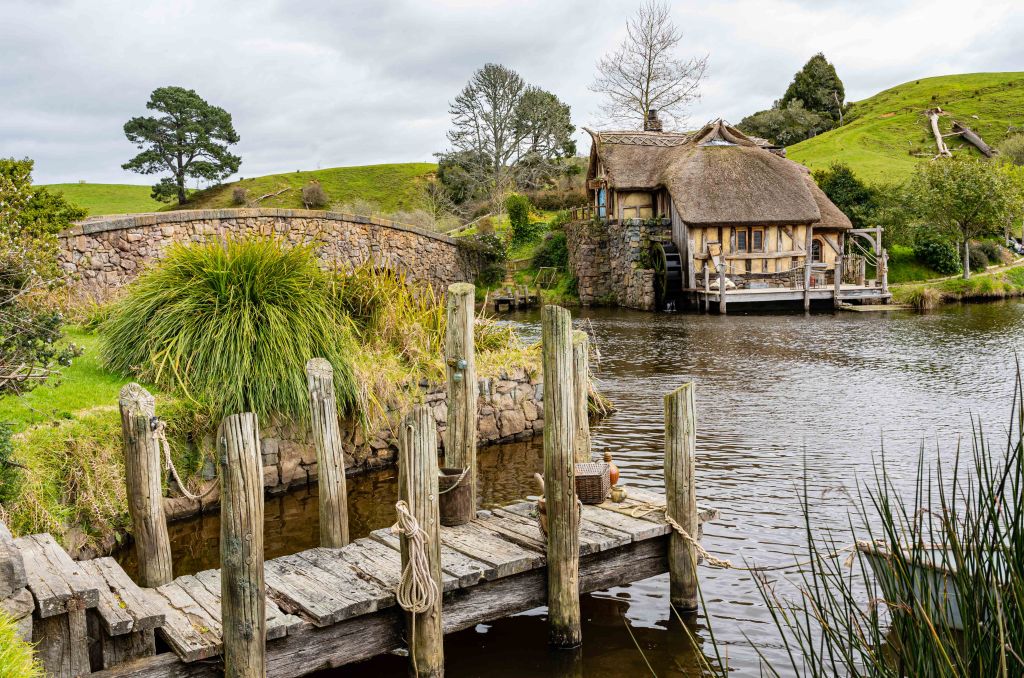
The path meanders briefly into a Kiwi fightback – a large cabbage tree sits amongst a patch of natives in a small gully, and the flowers of a kowhai glow bright yellow, a tui loud and proud somewhere in the depths of them. We pass the mill on the way to The Green Dragon where the tour ends and, thankfully, so does the fakery – we are served real beer, albeit in ceramic mugs rather than glasses.
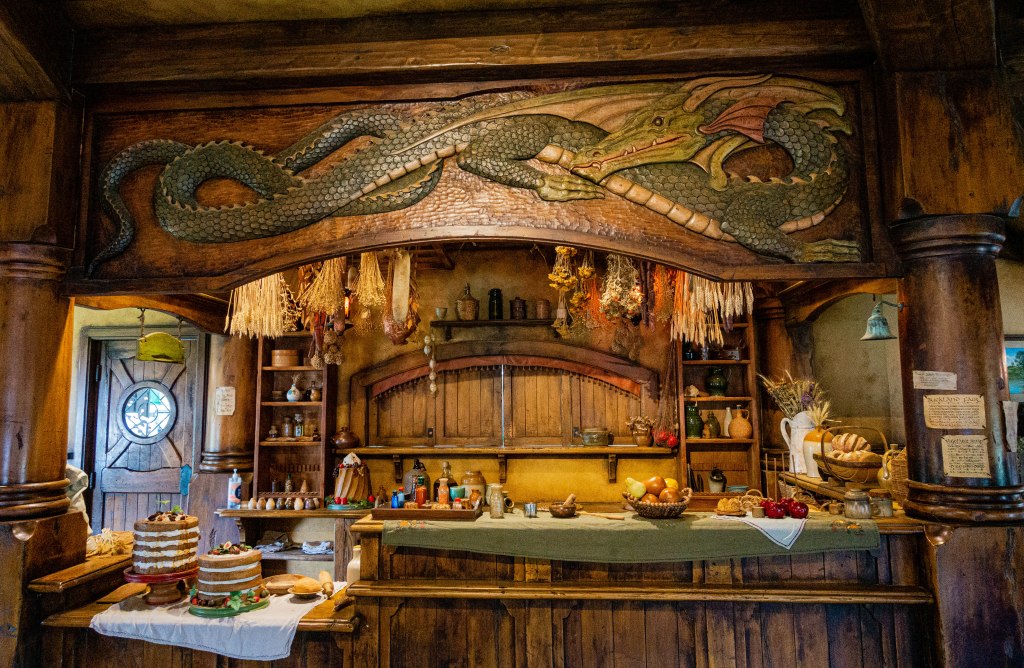
It’s been a lovely couple of hours, well worth the $80 each we paid (although I wonder how many Kiwis can afford to pay that). For my part I’m glad it’s quieter than it normally would be, but those empty buses are a reminder that many livelihoods depend on this business and I hope it’s not long before they are back in use. Until then I hope this, and many other businesses that rely on overseas tourists, survive these tough times to welcome them again.
Must go there now You make it sound amazing xxxx
Sent from my iPhone
>
LikeLike
It is! Go – and enjoy. xx
LikeLike